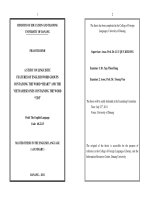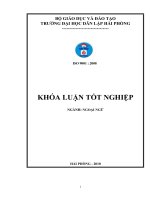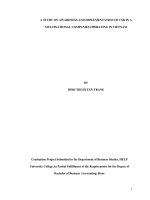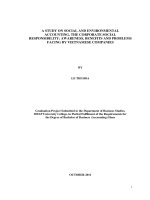A Primer on Check and ATM Cards
Bạn đang xem bản rút gọn của tài liệu. Xem và tải ngay bản đầy đủ của tài liệu tại đây (40.66 KB, 2 trang )
A Primer on Check and ATM Cards
The following information has been gathered in order to assist you as you
introduce your students to the latest trends in the wide range of financial service
products, namely debit cards.
what is a debit card?
A debit card is a banking card enhanced with automated teller machine (ATM)
and point-of-sale (POS) features so that it can be used at merchant locations. A
debit card is linked to an individual's checking account, allowing funds to be
withdrawn at the ATM and point-of-sale without writing a check. Each financial
institution creates an identity for its debit card to customize the product and
differentiate it in the market. Debit cards can also be called deposit access cards.
what is an example of a debit card?
One type of debit card is a financial institution's ATM card with point-of-sale
features that incorporates a specific acceptance mark (Visa ® or MasterCard ®).
Payment is completed by signing a sales draft or by entering a PIN. Then the
amount of the sale is deducted from the cardholder's checking account within
one to three days.
These debit cards are accepted anywhere consumers use their Visa or
MasterCard credit cards.
Another type of debit card is an ATM card bearing a PLUS ® or CIRRUS ® logo.
When cardholders use the card at an ATM or merchant location that accepts
PLUS or CIRRUS, the cardholder enters the PIN and the amount of the sale is
automatically deducted from the cardholder's checking account.
A regular ATM card doesn't have a Visa or MasterCard logo, but instead has a
PLUS or CIRRUS logo and is good only where the merchant accepts those
brands or at an ATM.
what does it do?
A debit card enables the cardholder to pay for purchases directly via his or her
checking account, replacing cash and checks.
how is a debit card used?
When using a debit card to pay for goods and services, the purchase amount is
deducted from the cardholder's checking account. Depending on the type of card,
processing a check card transaction requires the cardholder either to sign a sales
draft, or to enter a PIN into special terminal equipment, just like at an ATM.
benefits of using a debit card:
• Makes the payment process at the checkout counter quicker and more
convenient. There is no need to fill out a check or to present identification
and wait while the identification is written down or verified.
• Eliminates the need to carry a checkbook and a lot of cash.
• Doesn't deplete the available cash in your wallet.
• Can be used out of town or at locations where personal checks are not
accepted.
• Reduces the possibility of loss or theft of cash.
disadvantages of using debit cards:
• Although accepted at over 10.5 million locations around the world, debit
cards cannot be used in all situations (making cash and checks necessary
in some situations).
• The cardholder must be certain of his or her checking account balance, as
it might be possible to make purchases beyond the funds available.
where are check cards accepted?
Check cards can be used at merchant locations wherever the card logo is
displayed.
what does it cost?
Banks determine the fees for each card and/or transaction.
how do you keep track of your check card transactions?
Debit card holders receive receipts at each ATM or merchant location. Users
typically record debit card purchases in their checkbook registers. By deducting
debit card transactions from their accounts on a regular basis, debit card holders
can maintain the most up-to-date available balances.
what if you lose your ATM receipt?
All check card transactions will appear as deductions on your next checking
account statement from your financial institution.









